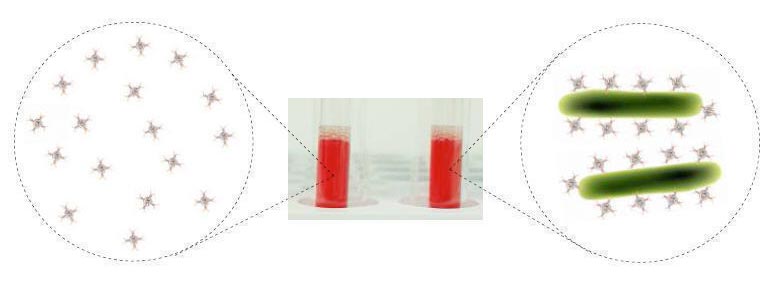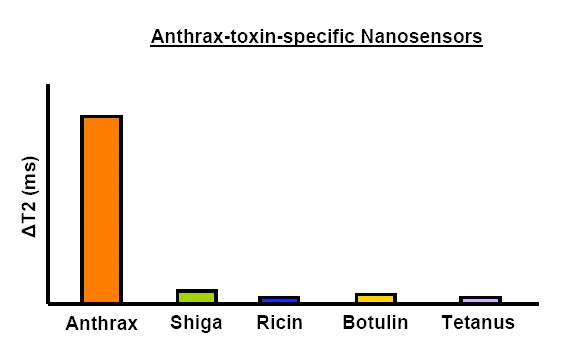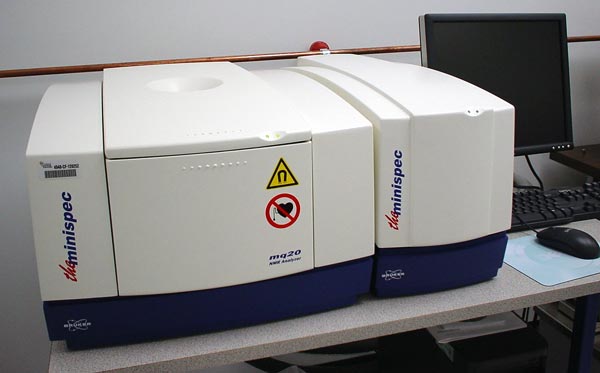Bacterial Detection
Our laboratory is actively developing magnetic nanosensors for the rapid detection of microbiological agents in complex media. Specifically, our group has reported the sensitive detection of bacteria (Mycobacterium avium spp. paratuberculosis – MAP) in milk and blood within 30 minutes, using dextran-coated iron oxide nanoparticles conjugated with antibodies that recognize surface proteins found on the bacteria. With this technology, we can potentially detect a single bacterium (1 – 10 CFU), under interference introduced by the presence of six different bacterial species (109 CFU). As MAP causes Johne’s disease in cattle, each year causing billion dollar losses to the US agriculture, and as this microorganism has been implicated in the etiology of Crohn’s disease, our technology can have applications spanning a wide spectrum of economic activities, ranging from agriculture to healthcare, and from food industry to homeland security. Current projects target the development of magnetic nanosensors that can detect bacterial toxins in environmental samples, as well as bacterial antigens in circulation.

Toxin Detection
Bacterial intoxication is still a major source of bacterial pathogenesis. Apart from the potential use of toxins as bioterrrorism agents, toxins can cause widespread epidemics upon entering the food distribution chain. Contaminated produce, such as spinach and tomatoes, as well as dairy products and meat, can cause severe illness, and even death, to many individuals. Utilizing magnetic nanosensors, we target the development of toxin-specific nanosenors that can determine the presence of a particular toxin in environmental, food, and clinical samples.

Pathogen and Toxin Detection Instrumentation
Dr. Perez performs his bacterial and toxin detection research experiments in his lab using a commercially available Bruker’s miniSpec relaxometer. This tabletop MRI unit (see below) can measure changes in water relaxation times that occurs when magnetic nanoparticle conjugates self assemble with a specific pathogen or toxin target in solution. The observed changes in T2 relaxation times are fast and dose dependant and can report on the presence and amount of the pathogen. Dr. Perez is exploring the design and synthesis of a series of various magnetic nanoparticle conjugates as magnetic relaxation nanoprobes to identify various kind of pathogens and toxins. This work in conjunction with the development of a miniaturized an portable relaxometer would facilitate testing at the site of bacterial contamination, thereby providing a method to test the integrity of the food supply in the midst of a bacterial outbreak or a toxic contamination.

For More Information
Dr. J. Manuel Perez
Department of Chemistry, CH 117
University of Central Florida
Orlando, FL 32816